Best D3.js Books to Read in November 2025

D3.js in Action, Third Edition


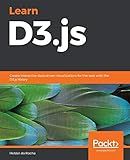
Learn D3.js: Create interactive data-driven visualizations for the web with the D3.js library


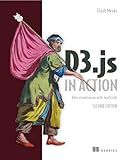
D3.js in Action: Data visualization with JavaScript


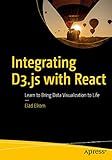
Integrating D3.js with React: Learn to Bring Data Visualization to Life


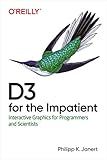
D3 for the Impatient: Interactive Graphics for Programmers and Scientists


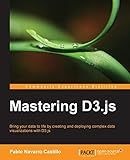
Mastering D3.js


D3.js is a powerful JavaScript library for creating dynamic, interactive data visualizations in web browsers. With its growing popularity, many books have been published to help both beginners and advanced users master D3.js. This article will guide you on how to choose the best D3.js book for your needs, providing insights into what to consider before making a purchase.
Understanding D3.js
D3.js stands for Data-Driven Documents, and it is all about bringing data to life using HTML, SVG, and CSS. It provides tools for effective data manipulation and visualization, making complex datasets more understandable and visually appealing. Mastering D3.js can enhance your ability to tell compelling data stories, whether for personal projects, academic research, or professional work.
Consider Your Skill Level
When searching for the best D3.js book, your current skill level is a crucial factor to consider. Books targeted at beginners often cover the basics of D3.js, including data binding, scales, axes, and selections. They are written with a less technical approach and include numerous examples and exercises to practice.
On the other hand, intermediate or advanced users might look for books that delve into more complex topics like animations, transitions, and optimization techniques. Some books also explore integrating D3.js with other libraries and frameworks, providing advanced users with tools to expand their skillset further.
Key Topics to Look For
Basics You Must Understand
- Data Binding: The core concept of D3.js, allowing data to be connected to DOM elements.
- SVG, Canvas, and HTML: Fundamental knowledge for rendering visualizations.
- Scales and Axes: Understanding how data scales work and how to effectively use axes.
Advanced Topics
- Interactivity and Animation: Learn how to add life to your visualizations.
- Optimization and Performance: Techniques to ensure your visualizations run smoothly.
- Integration and Extension: Using D3.js with libraries like React or Angular.
Check for Up-to-Date Content
D3.js has evolved since its inception, so it’s essential to choose a book that covers the latest version, ensuring you’re learning the most current best practices and features. Check the publication date and the D3.js version it covers. Books that also discuss recent trends in data visualization can provide you with a more comprehensive understanding of the field.
Reviews and Author Expertise
Before purchasing, take a moment to read reviews and check the author’s background. Authors with industry experience or involved in significant D3.js projects can offer valuable insights and practical knowledge. Online reviews often highlight the strengths and weaknesses of the book from the perspective of different users, giving you a clearer picture of what to expect.
Price and Deals
While considering these factors, you might also want to find great deals on D3.js books. Discounts and deals can make a significant difference, especially if you're planning to buy multiple books. It's worth checking out platforms that offer JavaScript books discounts, where you might find D3.js books included.
Conclusion
Finding the best D3.js book requires a balance of understanding your learning needs and exploring available resources that match those needs. By considering your skill level, the book’s content, author expertise, and any available deals, you can find a book that provides the knowledge you need to create stunning data visualizations with D3.js. Keep learning and experimenting, and soon you'll be crafting impressive visualizations that capture and communicate data stories effectively.
